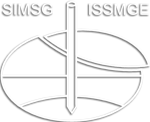Assessment of carbonation potential in lime-treated clayey soil based on thermogravimetric and Fourier transform infrared spectroscopy analyses
Assessment of carbonation potential in lime-treated clayey soil based on thermogravimetric and Fourier transform infrared spectroscopy analyses
Lime treatment is a widely adopted technique to improve the workability and mechanical performance of clayey soils comprising pavement subgrade, embankments or building foundations. Although it is a widespread technique, the interaction of atmospheric and soil CO2 with the calcium-bearing phases of the treated soil is not sufficiently explored. The detailed chemical characterisation of lime-treated soils helps evaluate their potential to carbonate during different stages of curing. The present study investigates the carbonation potential of lime-treated and compacted clayey soil cured for up to 365 days. After the proposed curing periods, the samples were exposed to 7 days of carbonation in a specially fabricated closed cell, which maintains a 3% CO2 concentration. The unconfined compressive strength (UCS) test was adopted to study the mechanical characteristics. The chemical analyses were performed using thermogravimetric analysis (TGA) and Fourier-transform infrared (FTIR) spectroscopy. The results depicted an average 30% reduction in the unconfined compressive strength and a 21% reduction in the elastic modulus upon carbonation in lime-treated soils. The analytical techniques identified the presence of carbonation of lime and hydrated phases at each curing period. The reduced engineering performance upon carbonation is attributed to the combined effects of lime paucity for pozzolanic reactions and carbonation of cementitious gels
D. Padmaraj; D. Naidu Arnepalli
9th International Congress on Environmental Geotechnics (ICEG2023)
Advances in Testing and Material Characterization
https://doi.org/10.53243/ICEG2023-181
